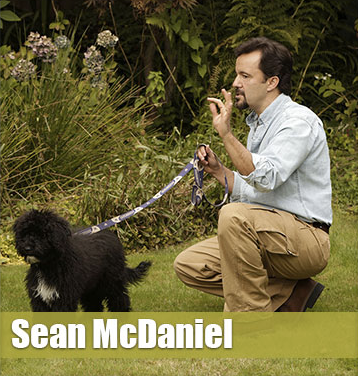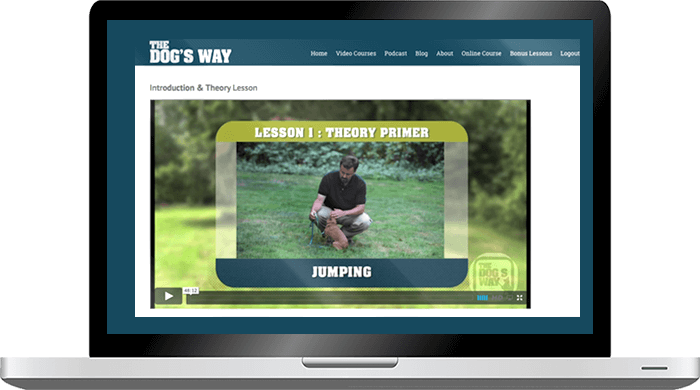How to Help Your Dog Live a Longer, Happier Life

You may have landed on this page thinking we’d provide you with some amazing remedies or quick, easy solutions to add a few years onto your dog’s life. If you love your dog, it’s natural to want him to live a long, healthy life, but the best way to do that is by providing him with the type of environment and the resources he needs to not only survive, but to thrive!
Just like humans, a dog’s health is dependent upon his lifestyle, not by some extreme measure or quick solution. By making sure your dog gets the care and attention he needs throughout his entire life, you’ll help him live longer. Here are four great ways to help your pet live a healthier and happier lifestyle.
1. Make sure your dog gets enough exercise.
Keep your dog active all year long. This doesn’t mean you have to take him out for an intense run every morning, but it’s important that your dog gets some cardio exercise every day. Here are several exercise ideas to get your dog up and moving:
- Take him for a walk.
- Hide treats around the house for him to search for.
- Make him work for his meal by putting a portion of his food inside a toy that he has to work to gain access to. (See our previous post to see which toy Sean McDaniel recommends for this.)
- Take your dog to the park.
- Play fetch.
In addition to adding weight to your dog, lack of exercise and the associated mental stimulation can lead to issues in your dog’s behavior. Dogs can get bored just like humans can! Keep your dog’s brain active and his mind going strong by taking him outside, to the dog park, or to a new place.
It’s also important to note that if your dog won’t or can’t exercise due to stiff joints or trouble walking, you should take him to the vet and address the problem as soon as possible. Don’t force him to get up and exercise, or you may make the problem worse. He may need special treatment.
2. Put your dog on a healthy diet.
Many dog foods are composed of unhealthy, processed ingredients, which can cause several problems for your dog, including obesity. Obesity can put dogs at a higher risk for certain diseases, such as diabetes, cancer, or arthritis. Make sure you are feeding your dog the right amount and right kind of food. Mercola states that many popular dog food brands are mainly composed of carbs, grains, and fillers, while the foundation of a healthy diet for dogs SHOULD be animal muscle meat, organs, and bones.
When it comes to dog treats, don’t let them make up more than 10% of your dog’s diet. Even though it’s fun to treat your dog to something he loves, these treats can be full of calories that add up in a hurry.
3. Take your dog to the vet regularly.
It’s wise to take your dog to the vet regularly, even if it seems like he doesn’t need a checkup. Your vet may catch something important that you don’t see. This way, you’ll also know if he’s up to date on everything he needs to stay healthy throughout the year.
4. Consider spaying or neutering your dog.
Of course, this isn’t necessary for all dogs by any means, and whether or not you want to sterilize your dog is up to you. However, there are several reasons you may want to consider this option. According to the Humane Society, there are several health advantages to spaying or neutering your pets. “On the whole, animals who have been sterilized at an early age tend to live longer, healthier lives, potentially increasing their lifespans an average of one to three years for dogs, and three to five years for cats.”
- Sterilization curbs undesirable hormone-related behaviors.
- It reduces health risks, including as fatal conditions and transmissible diseases.
The Dog’s Way Training
How does your dog behave on walks? Does he pull on the leash a lot? Learn why continuing to let your dog pull on the leash during a walk can undermine your relationship with your dog. Check out our post, What Does Leash Pulling Say about Your Relationship with Your Dog?
Dog trainer Sean McDaniel will help you establish a clear relationship with your dog, so he naturally grows to look to you for how to do things. Sean has several great resources for you to check out, including The Dog’s Way podcast, blog, and training DVDs.
If you’ve recently adopted a dog from your local animal shelter, and you could use some sound advice to start off right with your new pet, click the button below to download our free eBook!
The information contained in The Dog’s Way website is presented as public service information only. It is not intended to be nor is it a substitute for professional veterinary advice. Consult with your vet for diagnosis of and questions about your dog’s condition. The Dog’s Way occasionally supplies links to other web sites as a service to its readers and is not in any way responsible for information provided by other organizations.

About the Author: Sean
I’ve been training people and dogs in Seattle for the last decade and a half. My main focus when working with clients every week in one-on-one, private lessons is to help people learn to get their dogs to a functional level so that they can actually enjoy spending time every day with their dog instead of stressing about their dog’s behavior issues.
Affiliate Program
Make money by referring people to the video course!
. . . . .

About Sean
I’ve been training people and dogs in Seattle for the last decade and a half. My main focus when working with clients every week in one-on-one, private lessons is to help people learn to get their dogs to a functional level so that they can actually enjoy spending time every day with their dog instead of stressing about their dog’s behavior issues.
Ask Sean a question!
If we use your question in the show, Sean will send you a coupon code for free access to the online video course!
If you have a question you’d like me to respond to on the show (and you want to hear yourself on a future episode) leave me a voice mail! 1 (844) 364-7929 or email me here.


